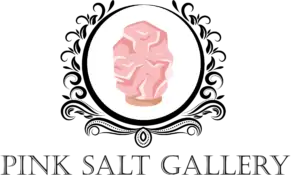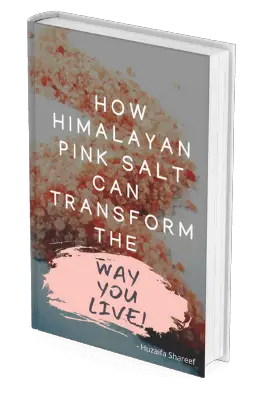
Huzaifa Shareef
Author

DOES HIMALAYAN PINK SALT HAVE IODINE?
People who switch to pink salt always ask, does Himalayan pink salt have iodine?
When you hear the word iodine, what comes to your mind? The thyroid gland, right?
Thyroid gland requires iodine for proper functioning and table salt is the most common resource of iodine.
Salt is not only based on sodium and chloride. It also contains molecules of sodium iodide and hence is one of the major sources of iodine.
To know whether Himalayan pink salt has adequate iodine or not, we studied some lab reports.
Question
Does Himalayan Pink Salt have iodine?
Answer
Himalayan pink salt doesn’t have detectable iodine. One of the possibilities could be low iodine content in its mine. Hence it is important for you to incorporate other sources of iodine in your diet.
Lab Report – Does Himalayan pink salt have iodine?
Before we take a sneak peek into the lab reports, let’s give you a quick overview of how important iodine is to our bodies.
What do we need iodine for?
Our body needs the micronutrient iodine in small amounts. Iodine helps our thyroid gland to produce hormones.
The thyroid produces tri-iodothyronine (T3) and thyroxine (T4) hormones. These hormones regulate our heart rate, help our muscles to function, and develop our brain.
Iodine is essential for the prevention of mental retardation. Pregnant and lactating ladies need iodine in a higher quantity.
Iodine deficiency can lead to the disruption of thyroid hormones. It leads to either hypothyroidism or hyperthyroidism.
Iodine deficiency can also lead to goiter. This condition causes our thyroid gland to swell. Goiter is not prevalent nowadays due to awareness about iodine consumption.
Himalayan pink salt contains iodine naturally. Unlike iodized salt, it doesn’t go through iodization.
People also take seaweed while consuming Himalayan pink salt. The reason is that seaweed is rich in iodine.
To confirm the presence of iodine in Himalayan pink salt, we did a qualitative analysis.
Materials and Apparatus
The good thing is, that we were able to find most of the materials in our kitchen. Following is a list of all the things required to do this experiment:
- Himalayan pink salt (2 tablespoons)- We used good quality Himalayan pink salt.
- Distilled water (125 ml)- We used distilled water because tap water can give unpredictable results.
- Vinegar (1 teaspoon)- It was fun using vinegar in this experiment. Otherwise, we always used it for cooking and cleaning purposes.
- 3% Hydrogen peroxide solution (H2O2) (1 teaspoon)- We found it at a medical store.
- Corn starch (1 scoop)- We used corn starch, but you can also use liquid starch as its substitute.
- Graduated measuring cup- We used it to measure the quantity of water.
- Glass jar- We used it for easy handling.
- Disposable plastic spoon (3-4)- We used a different spoon to mix each material.
Method
For doing this experiment, we didn’t need to go to a special place. We used our kitchen counter for this purpose.
- We started by pouring 125 ml of water into a glass jar. We used a glass jar because a plastic cup can easily get spilled.
- We measured 2 tablespoons of Himalayan pink salt and added them to the water. We stirred the solution for a while until most of the salt got dissolved.
- The saltwater turned to light pink color. After that, we mixed 1 teaspoon of vinegar into the prepared solution.
- Then, we added 1 teaspoon of 3% hydrogen peroxide solution to it.
- In the end, we added 1 scoop of corn starch to it and dissolved it.
- We let it stand for a few minutes. Then recorded the result.
Result
After following all the above steps, the solution didn’t turn purple. The purple color is the indicator of the presence of iodine in the salt.
Discussion
It’s time to analyze, ‘does Himalayan pink salt contain iodine?’
We dissolved Himalayan pink salt in the water to dissolve any iodine present in it. Iodine ions get dissolved faster than salt grains. That’s why we didn’t worry about dissolving the remaining bits of the salt.
Iodine ions contain an extra electron. At this stage, the reaction needs acidification. We did it by adding vinegar because it contains acetic acid.
Vinegar provides enough hydrogen to take the extra electrons away from iodine ions. It makes the reaction fast. Also, it ensures the free availability of iodine.
The reaction proceeded when we added hydrogen peroxide as a reactant to it. Hydrogen peroxide makes sure that no one feels left out.
It gifts oxygen to hydrogen ions because they deserve it. To celebrate this reward, happy molecules of iodine and water get formed.
Then, as an indicator, we added starch to it. If there is enough iodine, then it gets reacted with starch. It causes the solution to turn blue to purple.
But, in the case of Himalayan pink salt, the solution didn’t change its color. Like other salt experiments, this one doesn’t require vitamin C (ascorbic acid).
The reason is it’s harmful to discard iodine as it is. Ascorbic acid converts it to iodide again.
Conclusion
The conclusion we get is, Himalayan pink salt doesn’t have detectable iodine. One of the possibilities could be low iodine content in its mine.
A similar experiment done using iodized salt results in a purple solution.This shows that iodized table salt has detectatble quantities of iodine.
Other Sources of Iodine
Since himalayan pink salt doesn’t have iodine, it is important for people (specifically with hypothyroidism) to incorporate other foods with iodine in their diet. These are some easily available food that are good sources of iodine.
- Seafood (fish & weed)
- Dairy products (milk, cheese, yogurt)
- Beef
- Chicken
Key takeaway
The naturally occurring iodine in Himalayan pink isn’t observable. It answers the question about Himalayan pink salt having iodine.
Patients with hypothyroidism need to take it seriously. The small amounts of iodine in this salt might not be enough to meet our iodine needs.
“Come, my head’s free at last!” said Alice in a tone of delight, which changed into alarm in another moment, when she found that her shoulders were nowhere to be found: all she could see, when she looked down, was an immense length of neck, which seemed to rise like a stalk out of a sea of green leaves that lay far below her.
“What can all that green stuff be?” said Alice. “And where have my shoulders got to? And oh, my poor hands, how is it I can’t see you?” She was moving them about as she spoke, but no result seemed to follow, except a little shaking among the distant green leaves.
As there seemed to be no chance of getting her hands up to her head, she tried to get her head down to them, and was delighted to find that her neck would bend about easily in any direction, like a serpent. She had just succeeded in curving it down into a graceful zigzag, and was going to dive in among the leaves, which she found to be nothing but the tops of the trees under which she had been wandering, when a sharp hiss made her draw back in a hurry: a large pigeon had flown into her face, and was beating her violently with its wings.
© [year]. Pink Salt Gallery All Rights Reserved.




